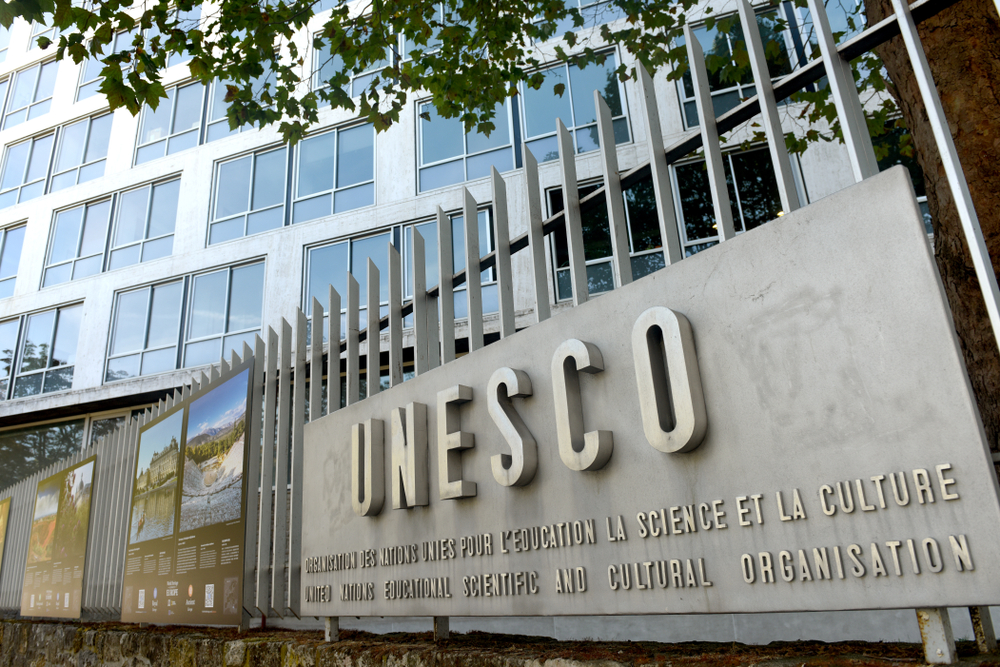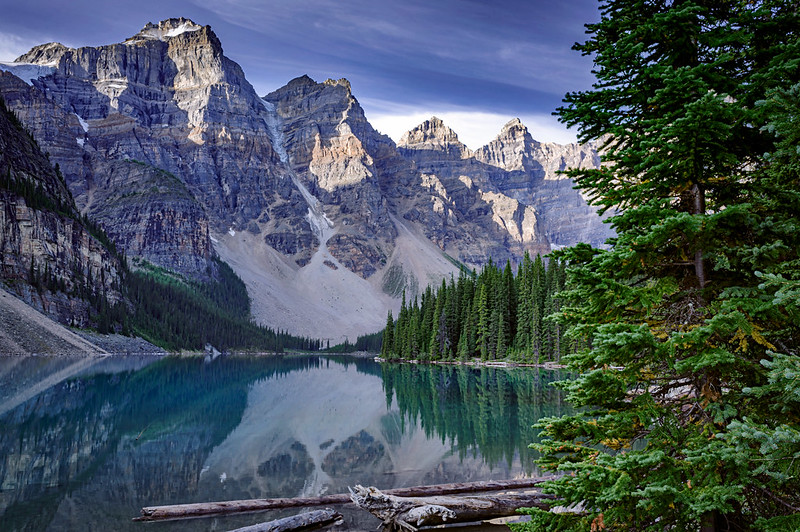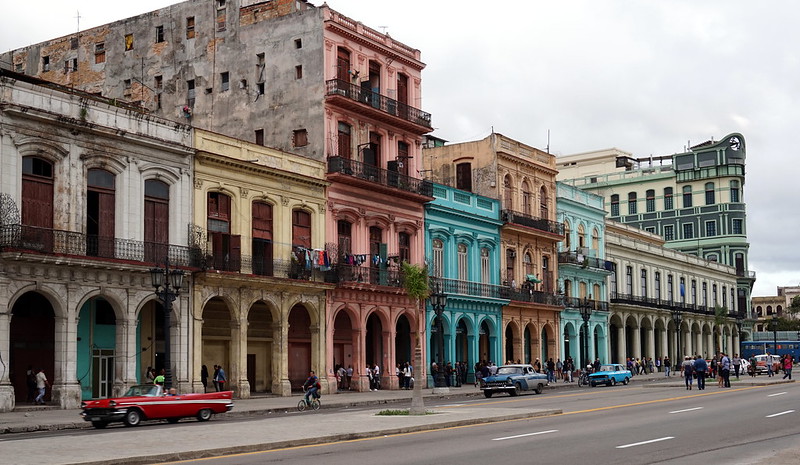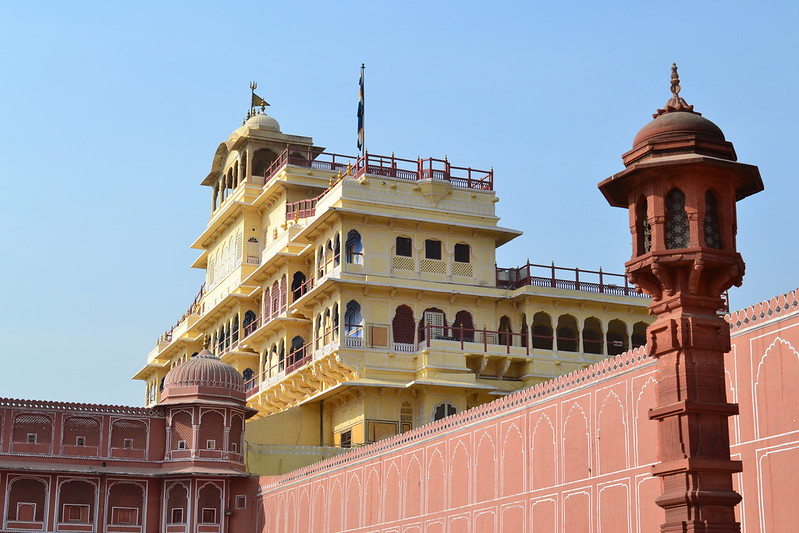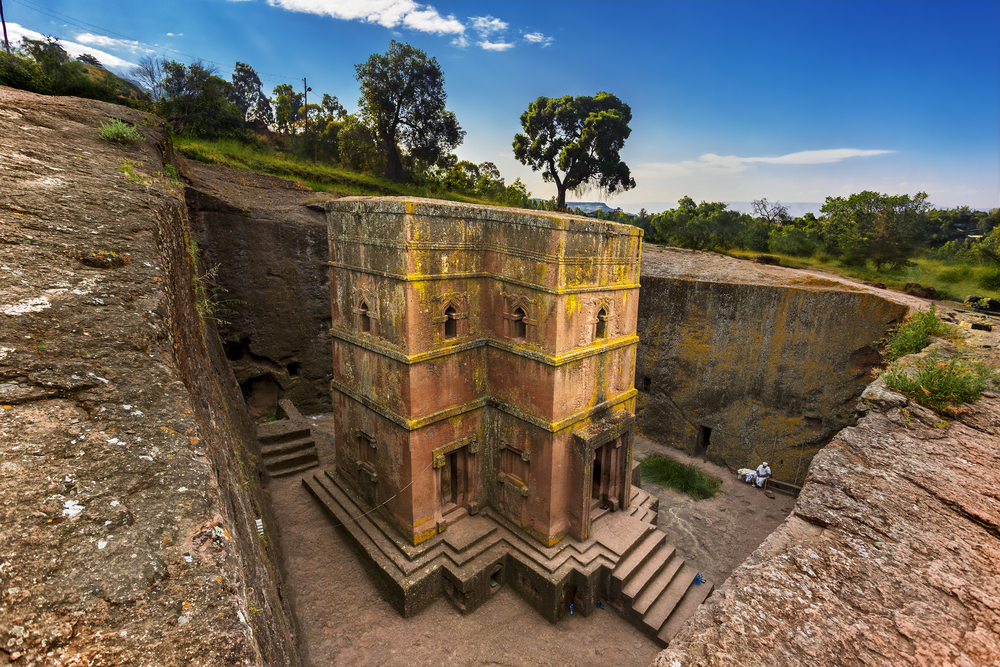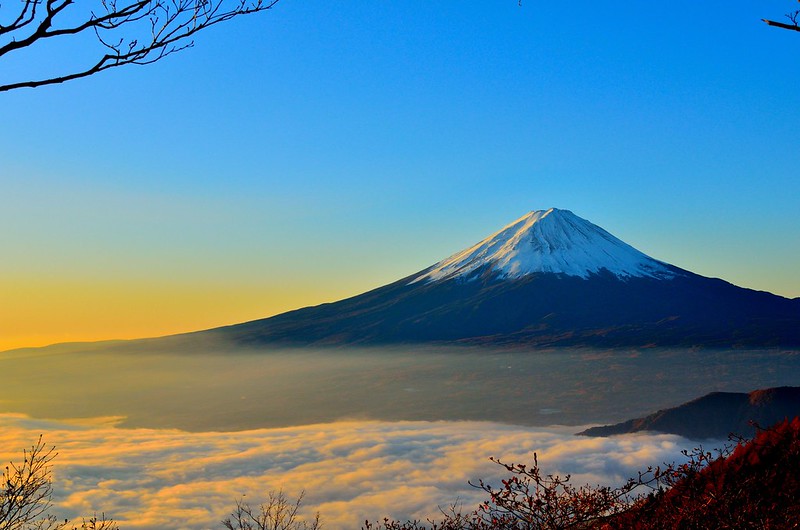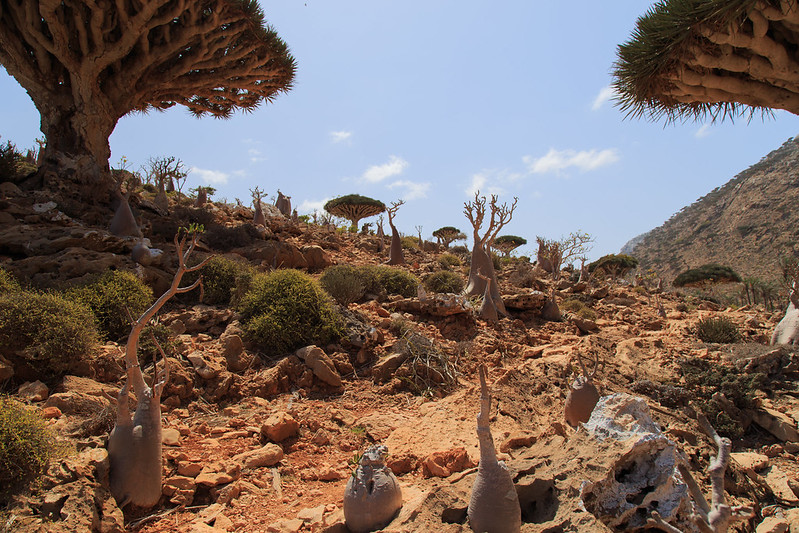Awe-Inspiring Protected Landmarks
World Heritage Sites are not just rooted in historical and cultural significance. While there is almost always some sort of ancient backstory that is valuable to humanity, many of these places make the list for their impeccable natural beauty.
These 34 remarkable destinations are said to be the most important places on Earth—and it doesn’t hurt that they are extremely visually appealing either.

What is a UNESCO World Heritage Site?
World Heritage Sites are places around the globe that have been deemed to be of “Outstanding Universal Value”—meaning they are significantly important to all of humanity.
These places have been specifically set aside to be protected.
How many World Heritage Sites exist today?
There are over a thousand UNESCO World Heritage Sites scattered around the world—with new ones added every couple of years.
In 2023 alone, there were 42 new sites added to the list.
 Karolis Kavolelis, Shutterstock
Karolis Kavolelis, Shutterstock
Which country has the most sites?
With 59 selected areas, Italy is the country with the most sites; followed by China with 57, then France and Germany with 52 each.
What is the most visited World Heritage Site?
The Forbidden City in Beijing, China, is the world's most visited World Heritage Site.
Built in the early 1400s, the Forbidden City served as the home of Chinese emperors and their households and was the ceremonial and political center of the Chinese government for over 500 years.
Breathtaking Beauty
While many World Heritage Sites have extremely valuable historical backgrounds, this list is focused on the sites with unmatched allure.
Here’s 34 of the most beautiful UNESCO World Heritage Sites on the planet.
Machu Picchu, Peru
Rich in history, the intricate stone ruins of Machu Picchu are the work of 15th-century Inca rulers.
However, perched atop the flattened peak of a mountain and surrounded by luscious greenery, its natural setting is what makes it so alluring.
Machu Picchu is not only a World Heritage Site, but it is also one of the Seven Wonders of the World.
Bagan, Myanmar
The ancient city of Bagan is located in the Asian country of Myanmar, and dates back as far as the second century AD.
With a rich history and nearly 2000 ancient temples from different time periods, Bagan stands as evidence to achievements made by men before any technological innovation came into being.
Angkor Wat, Cambodia
Angkor Wat is a Hindu-Buddhist temple complex in Cambodia, and is considered one of the largest religious monuments in the world.
This architectural masterpiece covers over 400 acres—an area four times the size of Vatican City.
Belize Barrier Reef
The stunning series of coral reefs that straddle the coast of Belize is a breathtaking spectacle surrounded by clear blue waters.
Known as the best scuba diving destination in the world, the Belize Barrier Reef Reserve System is an important habitat for threatened marine species and endangered flora
 Globe Guide Media Inc, Shutterstock.
Globe Guide Media Inc, Shutterstock.
Bwindi Impenetrable National Park, Uganda
This beautiful sanctuary in Uganda covers nearly 82,000 acres and is famous for its rare animal species, like monkeys, birds and gorillas.
In fact, it is home to half of the world’s population of the endangered mountain gorillas.
Budapest (Banks of the Danube), Hungary
The stunning architecture along the central stretch of Budapest illustrates great periods of Hungarian history.
Specific masterpieces include the Parliament, Opera House, the Hungarian Academy of Sciences, and the Market Hall.
Canadian Rocky Mountain Parks, Canada
The Canadian Rocky Mountains Parks includes seven connecting national and provincial parks.
Within these majestic natural playgrounds you’ll find towering mountains, sparkling glaciers, steaming hot springs, rushing waterfalls, canyons, limestone caves, and so much more.
The Fortified City of Carcassonne, France
Visiting the medieval city of Carcassonne in France is said to be like walking into the pages of a storybook.
The walled hilltop city has ramparts, towers, and turrets befitting a castle from a fairytale.
Carcassonne has been inhabited since the New Stone Age, and its exceptional preservation of its citadel (a medieval fortress).
Danxia Landform, China
The Danxia Landform refers to various intriguing landscapes found in China that consist of a unique type of petroglyphic geomorphology.
Red sandstone and mineral deposits have been building up for more than 20 million years, causing a surreal layered effect.
The stunning striped mountains are said to be, “Mother Nature’s answer to Photoshop.”
Old City of Dubrovnik, Croatia
This medieval metropolis dates back to the 7th century and is recognized for its outstanding medieval architecture and fortified old town.
Visitors can actually get on top of the surrounding walls to take in exceptional views of the historical city.
Galápagos Islands, Ecuador
These incredibly beautiful volcanic islands are famous for their large number of endemic species, which were studied by Charles Darwin in the 1830s and inspired his theory of evolution by means of natural selection.
The strikingly rugged landscapes offer volcanic mountains, craters and cliffs surrounded by beautiful turquoise water—not to mention dinosaur-like giant tortoises and real-life blue-footed boobies.
 Diego Delso, CC BY-SA 4.0, Wikimedia Commons
Diego Delso, CC BY-SA 4.0, Wikimedia Commons
Pyramids of Giza, Egypt
This incredible historic pyramid complex in Egypt includes The Great Pyramid, which ranks as one of the Seven Wonders of the World, and dates back 4,500 years.
These ancient royal tombs surrounded by golden sand are one of the most iconic sights in the world and are recognized and protected for their political and architectural significance.
Great Barrier Reef, Australia
The Great Barrier Reef in Australia is the largest living thing on Earth, and can actually be seen from space.
With nearly 3,000 individual reefs and 900 islands stretching over 1,400 miles, this magnificent ecosystem stands as one of the Seven Wonders of the World.
 marcobrivio.photography, Sutterstock
marcobrivio.photography, Sutterstock
Ha Long Bay, Vietnam
Ha Long Bay is a tropical paradise known for its stunning blue waters and spread of limestone islands packed with gorgeous greenery and exquisite wildlife.
The unique beauty of the bay with its pristine beaches, mysterious caves and grottos and peaceful fishing villages makes this a natural wonder worthy of a World Heritage listing.
Old Havana, Cuba
The unique Baroque and neoclassical architecture of this historic old Caribbean town dates back more than 500 years, giving it historical significance.
With narrow cobblestone streets and facades painting in traditional Caribbean blues, pinks and yellows, Old Havana has maintained a remarkable unity of character.
Huanglong Scenic Area, China
The Huanglong Scenic Area is situated in Sichuan’s Minshan mountain range, and offers striking views of snowy mountain peaks set against forests, waterfalls, and hot springs.
It is best known for its ultra-blue travertine lakes created by the region’s stunning limestone formations that are unique in all of Asia.
Iguazu National Park, Argentina
Right on the Argentina-Brazil border, Iguazu Falls consists of 200 waterfalls reaching heights of 200-feet—making it one of the most stunning sites in the world.
Not only is it a breathtaking view, but visitors report feeling vibrations in their chest from the loud, plunging water—reminding us just how powerful Mother Nature can be.
Historic Areas of Istanbul, Turkey
Currently, Istanbul stands as the most visited place in the world—likely for its impressive historical architecture built over the past 2,000 years.
From massive domes, colored mosaics, minarets, and Islamic calligraphy, UNESCO praises Istanbul for its “incomparable skyline.”
Jaipur City, India
Back in 1876, the city’s maharaja, Sawai Ram Singh II, ordered the buildings to be painted an orangey-pink color for a royal visit from Prince Albert and Queen Victoria—and many of the buildings remain this color today.
The pink city made the World Heritage Cities list in 2019, but also has two other World Hertiage sites within it: Amer Fort—a stunning artistic palace, and Jantar Mantar—a collection of monuments including the world’s largest sundial.
Historic Center of Krakow, Poland
The stunning historic central square in Krakow is said to be one of the best in Europe. Defined by its 15th-century town hall tower (which visitors can actually climb), this impressive city center is only a short walk away from the Wawel Castle—another World Hertiage Site in Poland.
Lake Nakuru, Kenya
Lake Nakuru, specifically the Kenya Lake System, makes the list purely due to the incredible wildlife it attracts, such as lions, leopards, and swarms of flamingos.
The outstanding beauty of the three inter-linked, relatively shallow lakes covers over 32,000 hectares.
Rock-Hewn Churches of Lalibela, Ethiopia
The small Ethiopian town of Lalibela is renowned for its 11 medieval churches carved out of monolithic rock.
These fascinating structures are complete with catacombs and ceremonial passages, and boast impressive cross-shaped designs and a network of trenches connecting other churches.
Meteora, Greece
Situated atop almost inaccessible sandstone peaks in central Greece are the 15th-century buildings of Meteora.
Brave travelers can pay a visit to the Monastery of the Holy Trinity—one of six monasteries that are still standing—via a 140-step staircase cut into the side of the cliff.
Mont Saint-Michel, France
The rocky island of Mont Saint-Michel rises up from vast sandbanks and powerful tides, giving off an otherworldly appearance.
On the island sits a small medieval village, complete with winding streets and tiny houses—but the crown jewel is undoubtedly the Abbey of Mont Saint-Michel, built in 708 A.D.
Mount Fuji, Japan
Mount Fuji is a whopping 12,388-foot active stratovolcano on the Japanese island of Honshu. It is the tallest mountain in Japan, and the seventh-highest peak of an island on Earth.
It is known as a Special Place of Scenic Beauty and is said to have "inspired artists and poets and been the object of pilgrimage for centuries".
Namib Sand Sea, Namibia
The coastal desert region of Namibia offers a uniquely beautiful landscape with small rivers that come and go, creating astounding dunes and a unique ecosystem to the region’s endemic wildlife.
The constantly changing conditions of the Namib Sand Sea render it a “landscape of exceptional beauty,” according to UNESCO.
Okavango Delta, Botswana
The lush Okavango Delta is a 49-million-acre river delta in northern Botswana. It’s like a real-world Eden with cheetahs, zebras, buffalo and rhinos roaming freely.
The serene landscape is home to some of the world’s most endangered species and thus it is strictly protected. Tourists can embark on guided safaris—but it’s priced rather high to avoid overtourism in such a delicate land space.
Petra, Jordan
Petra is a historic and archaeological city in Jordan, famous for its rock-cut architecture with a 147-foot façade chiseled into the mountainside that dates back to the first century B.C.
It’s one of the world’s richest and largest archaeological sites, surrounded by a stunning red sandstone landscape.
Potala Palace, Tibet
Once the home to the Dalai Lama, this towering 17th-century structure now functions as a state museum. The massive palace has 13 stories and more than 1,000 rooms, as well as centuries-old shrines.
For visitors willing to make the 12,000-foot climb, the otherworldly Red Palace is filled with murals, bejeweled stupas, and tombs of past Dalai Lamas.
Redwood National and State parks, United States
Home to some of the tallest and oldest known trees in the world, this iconic forest in Northern California boasts trees that are a link to the past, dating back more than 2,200 years.
The Redwood parks are also home to rare wildlife, including bald eagles, Roosevelt elk, and the endangered California brown pelican.
Rock Islands Southern Lagoon, Palau
These mushroom-shaped islands look like a magical, lush garden springing out of Palau's turquoise lagoon.
The limestone islands were once home to small communities for three millennia, and the ruins of their village still exist today.
But, that’s not all. Below the bright-blue water is a complex reef system with over 385 different species of beautiful coral.
Socotra, Yemen
Socotra’s remote location and surreal landscape gives off a strange, distant planet vibe. The UFO-shaped dragon’s blood trees are the island’s most notable feature.
This isolated island is home to a high number of endemic species, and has been dubbed, “the most alien-looking place on Earth.”
Vatnajökull National Park, Iceland
This massive nature reserve is home to numerous subglacial volcanoes, giving Iceland the nickname, “The Land of Fire and Ice.”
The combination of the extreme natural forces of magma and ice caps have created incredibly unique land formations—including blue ice caves, rugged hyaloclastite ridges, and aquamarine calderas.
Yosemite National Park, United States
The highly popular national park in California’s Sierra Nevada mountains boasts an array of natural beauty, including alpine meadows, five of the world’s highest waterfalls, giant sequoia groves, and the half-mile-deep Yosemite Valley.
According to UNESCO, glacial erosion over millions of years is the cause for the spectacular park we see today.


